SLVSC61A November 2013 – October 2016 TPS54341
PRODUCTION DATA.
- 1 Features
- 2 Applications
- 3 Description
- 4 Revision History
- 5 Pin Configuration and Functions
- 6 Specifications
-
7 Detailed Description
- 7.1 Overview
- 7.2 Functional Block Diagram
- 7.3
Feature Description
- 7.3.1 Fixed Frequency PWM Control
- 7.3.2 Slope Compensation Output Current
- 7.3.3 Low Dropout Operation and Bootstrap Voltage (BOOT)
- 7.3.4 Error Amplifier
- 7.3.5 Adjusting the Output Voltage
- 7.3.6 Enable and Adjusting Undervoltage Lockout
- 7.3.7 Soft-Start/Tracking Pin (SS/TR)
- 7.3.8 Sequencing
- 7.3.9 Constant Switching Frequency and Timing Resistor (RT/CLK Pin)
- 7.3.10 Accurate Current Limit Operation and Maximum Switching Frequency
- 7.3.11 Synchronization to RT/CLK Pin
- 7.3.12 Power Good (PWRGD Pin)
- 7.3.13 Overvoltage Protection
- 7.3.14 Thermal Shutdown
- 7.3.15 Small-Signal Model for Loop Response
- 7.3.16 Simple Small-Signal Model for Peak-Current-Mode Control
- 7.3.17 Small Signal Model for Frequency Compensation
- 7.4 Device Functional Modes
-
8 Application and Implementation
- 8.1 Application Information
- 8.2
Typical Application
- 8.2.1 Design Requirements
- 8.2.2
Detailed Design Procedure
- 8.2.2.1 Selecting the Switching Frequency
- 8.2.2.2 Output Inductor Selection (LO)
- 8.2.2.3 Output Capacitor
- 8.2.2.4 Catch Diode
- 8.2.2.5 Input Capacitor
- 8.2.2.6 Slow-Start Capacitor
- 8.2.2.7 Bootstrap Capacitor Selection
- 8.2.2.8 Undervoltage Lockout Set Point
- 8.2.2.9 Output Voltage and Feedback Resistors Selection
- 8.2.2.10 Compensation
- 8.2.2.11 Discontinuous Conduction Mode and Eco-mode Boundary
- 8.2.2.12 Estimated Circuit Area
- 8.2.2.13 Power Dissipation Estimate
- 8.2.3 Application Curves
- 9 Power Supply Recommendations
- 10Layout
- 11Device and Documentation Support
- 12Mechanical, Packaging, and Orderable Information
パッケージ・オプション
メカニカル・データ(パッケージ|ピン)
- DPR|10
サーマルパッド・メカニカル・データ
- DPR|10
発注情報
6 Specifications
6.1 Absolute Maximum Ratings
over operating free-air temperature range (unless otherwise noted)(1)| MIN | MAX | UNIT | ||
|---|---|---|---|---|
| Input voltage | VIN | –0.3 | 45 | V |
| EN | –0.3 | 8.4 | ||
| BOOT | 53 | |||
| FB | –0.3 | 3 | ||
| COMP | –0.3 | 3 | ||
| PWRGD | –0.3 | 6 | ||
| SS/TR | –0.3 | 3 | ||
| RT/CLK | –0.3 | 3.6 | ||
| Output voltage | BOOT-SW | 8 | V | |
| SW | –0.6 | 45 | ||
| SW, transient (10 ns) | –2 | 45 | ||
| Operating junction temperature, TJ | –40 | 150 | °C | |
| Storage temperature, Tstg | –65 | 150 | °C | |
(1) Stresses beyond those listed under Absolute Maximum Ratings may cause permanent damage to the device. These are stress ratings only, which do not imply functional operation of the device at these or any other conditions beyond those indicated under Recommended Operating Conditions. Exposure to absolute-maximum-rated conditions for extended periods may affect device reliability.
6.2 ESD Ratings
| VALUE | UNIT | |||
|---|---|---|---|---|
| V(ESD) | Electrostatic discharge | Human-body model (HBM), per ANSI/ESDA/JEDEC JS-001(1) | ±2000 | V |
| Charged-device model (CDM), per JEDEC specification JESD22-C101(2) | ±500 | |||
(1) JEDEC document JEP155 states that 500-V HBM allows safe manufacturing with a standard ESD control process.
(2) JEDEC document JEP157 states that 250-V CDM allows safe manufacturing with a standard ESD control process.
6.3 Recommended Operating Conditions
over operating free-air temperature range (unless otherwise noted)| MIN | MAX | UNIT | ||
|---|---|---|---|---|
| VIN | Supply input voltage | 4.5 | 42 | V |
| VO | Output voltage | 0.8 | 41.1 | V |
| IO | Output current | 0 | 3.5 | A |
| TJ | Junction Temperature | –40 | 150 | °C |
6.4 Thermal Information
| THERMAL METRIC(1)(2) | TPS54341 | UNIT | |
|---|---|---|---|
| DPR (WSON) | |||
| 10 PINS | |||
| RθJA | Junction-to-ambient thermal resistance | 35.1 | °C/W |
| RθJC(top) | Junction-to-case (top) thermal resistance | 34.1 | °C/W |
| RθJB | Junction-to-board thermal resistance | 12.3 | °C/W |
| ψJT | Junction-to-top characterization parameter | 0.3 | °C/W |
| ψJB | Junction-to-board characterization parameter | 12.5 | °C/W |
| RθJC(bot) | Junction-to-case (bottom) thermal resistance | 2.2 | °C/W |
(1) For more information about traditional and new thermal metrics, see the Semiconductor and IC Package Thermal Metrics application report.
(2) Power rating at a specific ambient temperature TA should be determined with a junction temperature of 150°C. This is the point where distortion starts to substantially increase. See power dissipation estimate in application section of this data sheet for more information.
6.5 Electrical Characteristics
TJ = –40°C to 150°C, VIN = 4.5 V to 42 V (unless otherwise noted)| PARAMETER | TEST CONDITIONS | MIN | TYP | MAX | UNIT | ||
|---|---|---|---|---|---|---|---|
| SUPPLY VOLTAGE (VIN PIN) | |||||||
| Operating input voltage | 4.5 | 42 | V | ||||
| Internal undervoltage lockout threshold | Rising | 4.1 | 4.3 | 4.48 | V | ||
| Internal undervoltage lockout threshold hysteresis | 325 | mV | |||||
| Shutdown supply current | EN = 0 V, 25°C, 4.5 V ≤ VIN ≤ 42 V | 2.25 | 4.5 | μA | |||
| Operating: nonswitching supply current | FB = 0.9 V, TA = 25°C | 152 | 200 | ||||
| ENABLE AND UVLO (EN PIN) | |||||||
| Enable threshold voltage | No voltage hysteresis, rising and falling | 1.1 | 1.2 | 1.3 | V | ||
| Input current | Enable threshold = 50 mV | –4.6 | μA | ||||
| Enable threshold = –50 mV | –0.58 | –1.2 | –1.8 | ||||
| Hysteresis current | –2.2 | –3.4 | –4.5 | μA | |||
| Enable to COMP active | VIN = 12 V, TA = 25°C | 540 | µs | ||||
| VOLTAGE REFERENCE | |||||||
| Voltage reference | 0.792 | 0.8 | 0.808 | V | |||
| HIGH-SIDE MOSFET | |||||||
| On-resistance | VIN = 12 V, BOOT-SW = 6 V | 87 | 185 | mΩ | |||
| ERROR AMPLIFIER | |||||||
| Input current | 50 | nA | |||||
| Error amplifier transconductance (gm) | –2 μA < ICOMP < 2 μA, VCOMP = 1 V | 350 | μMhos | ||||
| Error amplifier transconductance (gm) during soft-start |
–2 μA < ICOMP < 2 μA, VCOMP = 1 V, VFB = 0.4 V | 77 | μMhos | ||||
| Error amplifier DC gain | VFB = 0.8 V | 10000 | V/V | ||||
| Min unity gain bandwidth | 2500 | kHz | |||||
| Error amplifier source and sink | V(COMP) = 1 V, 100-mV overdrive | ±30 | μA | ||||
| COMP to SW current transconductance | 12 | A/V | |||||
| CURRENT LIMIT | |||||||
| Current limit threshold | All VIN and temperatures, open loop(1) | 4.5 | 5.5 | 6.8 | A | ||
| All temperatures, VIN = 12 V, open loop(1) | 4.5 | 5.5 | 6.3 | ||||
| VIN = 12 V, TA = 25°C, open loop(1) | 5.2 | 5.5 | 5.9 | ||||
| Current limit threshold delay | 60 | ns | |||||
| THERMAL SHUTDOWN | |||||||
| Thermal shutdown | 176 | °C | |||||
| Thermal shutdown hysteresis | 12 | °C | |||||
| TIMING RESISTOR AND EXTERNAL CLOCK (RT/CLK PIN) | |||||||
| Switching frequency range using RT mode | 100 | 2500 | kHz | ||||
| ƒSW | Switching frequency | RT = 200 kΩ | 450 | 500 | 550 | kHz | |
| Switching frequency range using CLK mode | 160 | 2300 | kHz | ||||
| Minimum CLK input pulse width | 15 | ns | |||||
| RT/CLK high threshold | 1.55 | 2 | V | ||||
| RT/CLK low threshold | 0.5 | 1.2 | V | ||||
| RT/CLK falling edge to SW rising edge delay | Measured at 500 kHz with RT resistor in series | 55 | ns | ||||
| PLL lock in time | Measured at 500 kHz | 78 | μs | ||||
| SOFT START AND TRACKING (SS/TR PIN) | |||||||
| Charge current | VSS/TR = 0.4 V | 1.7 | µA | ||||
| SS/TR-to-FB matching | VSS/TR = 0.4 V | 42 | mV | ||||
| SS/TR-to-reference crossover | 98% nominal | 1.16 | V | ||||
| SS/TR discharge current (overload) | FB = 0 V, VSS/TR = 0.4 V | 354 | µA | ||||
| SS/TR discharge voltage | FB = 0 V | 54 | mV | ||||
| POWER GOOD (PWRGD PIN) | |||||||
| FB threshold for PWRGD low | FB falling | 90% | |||||
| FB threshold for PWRGD high | FB rising | 93% | |||||
| FB threshold for PWRGD low | FB rising | 108% | |||||
| FB threshold for PWRGD high | FB falling | 106% | |||||
| Hysteresis | FB falling | 2.5% | |||||
| Output high leakage | VPWRGD = 5.5 V, TA = 25°C | 10 | nA | ||||
| On resistance | IPWRGD = 3 mA, VFB < 0.79 V | 45 | Ω | ||||
| Minimum VIN for defined output | VPWRGD < 0.5 V, IPWRGD = 100 µA | 0.9 | 2 | V | |||
(1) Open Loop current limit measured directly at the SW pin and is independent of the inductor value and slope compensation.
6.6 Typical Characteristics
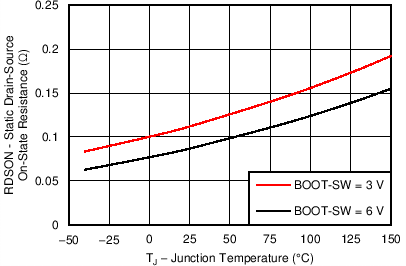 Figure 1. On Resistance vs Junction Temperature
Figure 1. On Resistance vs Junction Temperature
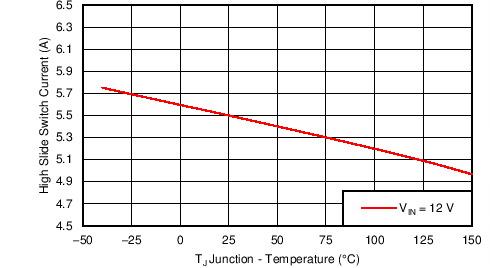
vs Junction Temperature
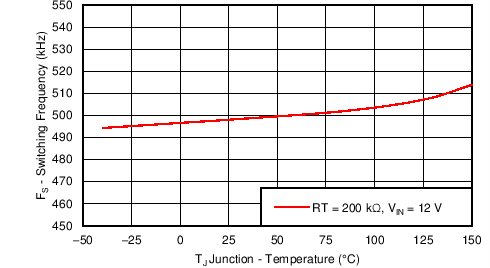
vs Junction Temperature
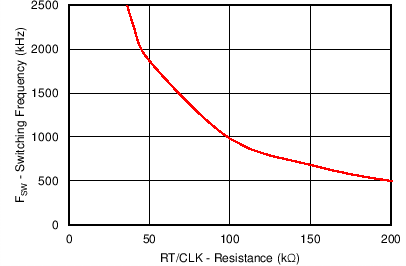 Figure 7. Switching Frequency vs
Figure 7. Switching Frequency vsRT/CLK Resistance High Frequency Range
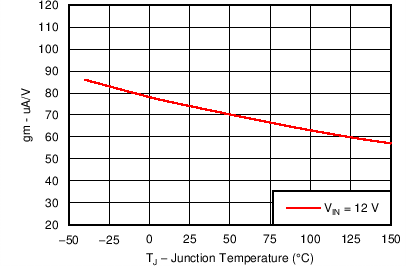 Figure 9. EA Transconductance During Soft-Start
Figure 9. EA Transconductance During Soft-Startvs Junction Temperature
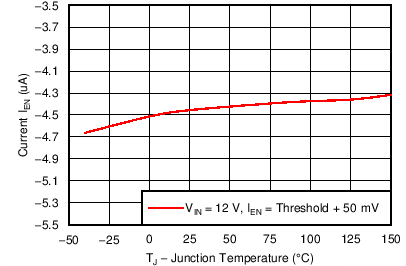 Figure 11. EN Pin Current vs Junction Temperature
Figure 11. EN Pin Current vs Junction Temperature
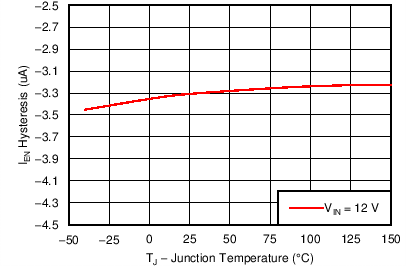 Figure 13. EN Pin Current Hysteresis
Figure 13. EN Pin Current Hysteresisvs Junction Temperature
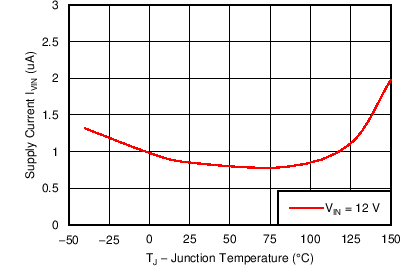 Figure 15. Shutdown Supply Current
Figure 15. Shutdown Supply Currentvs Junction Temperature
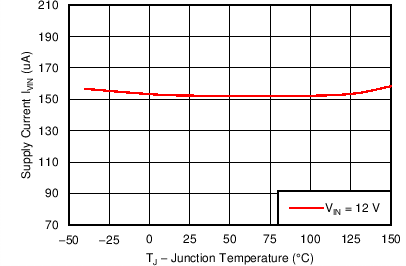 Figure 17. VIN Supply Current
Figure 17. VIN Supply Currentvs Junction Temperature
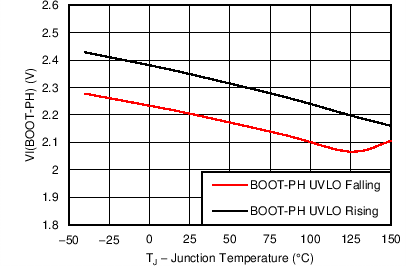 Figure 19. BOOT-SW UVLO
Figure 19. BOOT-SW UVLOvs Junction Temperature
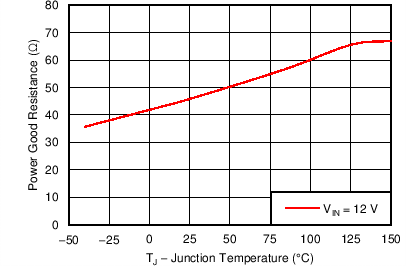 Figure 21. PWRGD On Resistance
Figure 21. PWRGD On Resistancevs Junction Temperature
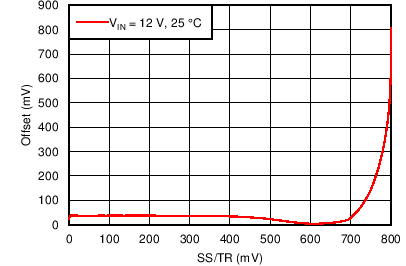 Figure 23. SS/TR to FB Offset vs FB
Figure 23. SS/TR to FB Offset vs FB
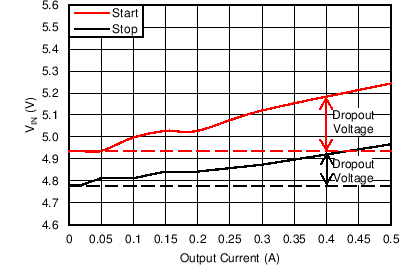 Figure 25. 5-V Start and Stop Voltage (see Low Dropout Operation and Bootstrap Voltage (BOOT))
Figure 25. 5-V Start and Stop Voltage (see Low Dropout Operation and Bootstrap Voltage (BOOT))
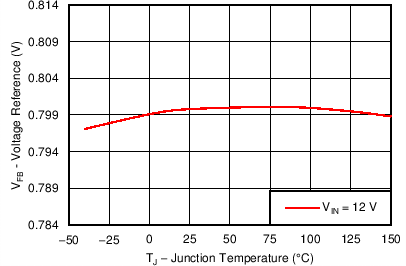 Figure 2. Voltage Reference
Figure 2. Voltage Referencevs Junction Temperature
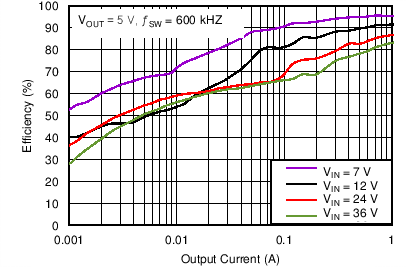 Figure 4. Switch Current Limit vs Input Voltage
Figure 4. Switch Current Limit vs Input Voltage
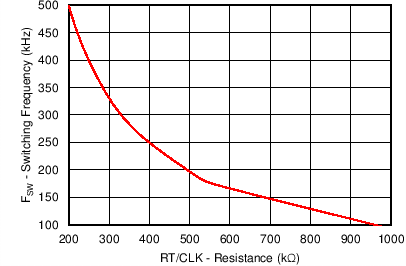 Figure 6. Switching Frequency vs
Figure 6. Switching Frequency vsRT/CLK Resistance Low Frequency Range
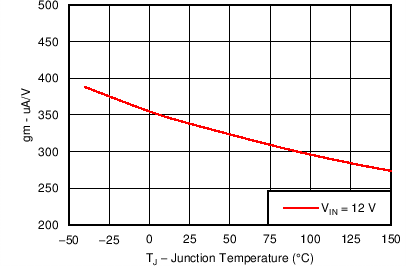 Figure 8. EA Transconductance
Figure 8. EA Transconductancevs Junction Temperature
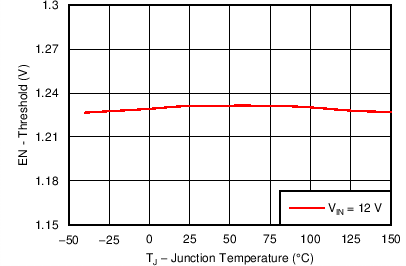 Figure 10. EN Pin Voltage vs Junction Temperature
Figure 10. EN Pin Voltage vs Junction Temperature
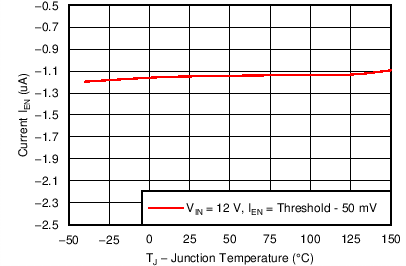 Figure 12. EN Pin Current vs Junction Temperature
Figure 12. EN Pin Current vs Junction Temperature
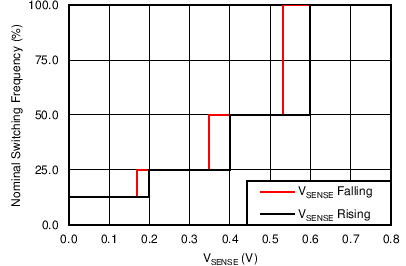 Figure 14. Switching Frequency vs FB
Figure 14. Switching Frequency vs FB
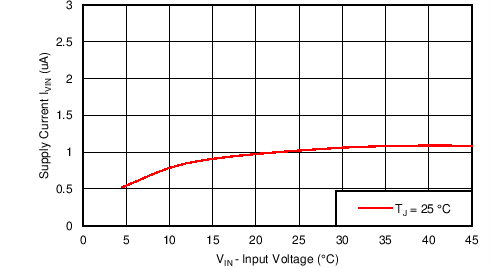
vs Input Voltage (VIN)
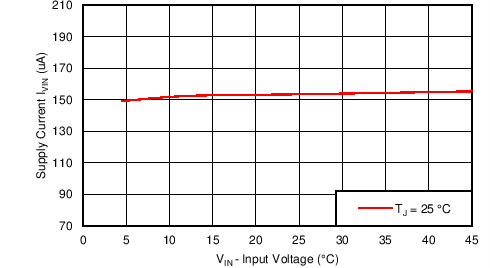
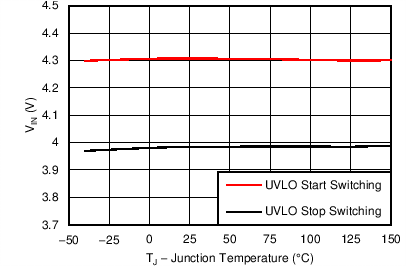 Figure 20. Input Voltage UVLO
Figure 20. Input Voltage UVLOvs Junction Temperature
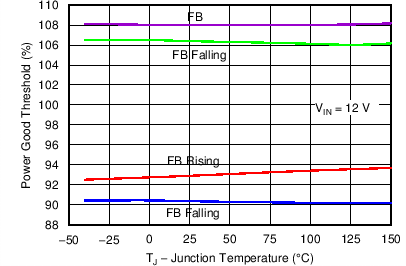 Figure 22. PWRGD Threshold
Figure 22. PWRGD Thresholdvs Junction Temperature
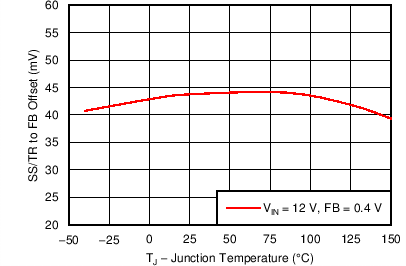 Figure 24. SS/TR to FB Offset vs Temperature
Figure 24. SS/TR to FB Offset vs Temperature